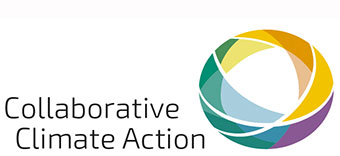2nd edition of the GCoM Multilevel Climate Action Playbook released!
Multilevel Climate Action Playbook – Policies and Enablers for All Levels of Government
In 2021, GCoM published a Mutlilevel Climate Action Playbook for local and regional governments together with partners. The aim was to integrate regional and local contributions (RLCs) into the Nationally Determined Contributions (NDCs).
The second edition of the Multilevel Climate Action Playbook, published during COP28, now focuses on creating the preconditions for integrating local elements in the NDCs. It offers tools for governments of all levels, from policy levers to institution-building, including recommendations and case studies.
We often hear about the need for collaboration between different levels of government for climate action. This playbook offers a toolbox providing how to effectively implement the much-needed Multilevel Climate Action.
In the first section, the playbook offers policy lever options for local, regional and national governments: Economic Instruments like Carbon Pricing or Emission Trading Systems, Regulatory Instruments like Performance or Technology Standards, and Voluntary/Information Instruments like Certification and Labeling. Some of the tools are illustrated with real-life examples for better understanding and easier replication.
The second part focuses on five Enablers and Processes to build Institutions for Multilevel Climate Action, which can be built on if existent or established where needed. An example for a subnational institution is the European Committee of the Regions. The national level can draw from NDC processes. The five options for Multilevel Climate Action in subnational and national governments presented in the playbook are: Vertical and Horizontal Collaboration and Coordination, Multilevel and Multi-Actor Capacity, Unlocking Finance through Multilevel Collaboration, Public Procurement, and Civil Society and Civic Engagement Processes. Again, these options are illustrated with real-life examples from different countries, both in the Global South and the Global North.
The third part offers a deep dive into four countries (Australia, Chile, Ghana, India) and one region (Middle East and North Africa) how they implement Multilevel Climate Action. With these trailblazers, the playbook shows how a combination of the different policy levers and institutions can be effectively implemented by national and subnational governments.
For easy usability, the playbook uses icons throughout the document to immediately show readers if an intervention can be used by national or subnational governments and if the intervention covers climate mitigation or climate adaptation.
Finally, the playbook provides key recommendations for national governments and for subnational governments. For instance, national governments may enhance national enabling frameworks and align policies, engage with the academic and research community, or unlock vital financing and funding opportunities across sectors. Subnational governments may engage cross-sector stakeholders, connect with and learn from other cities and regions, or regularly reaffirm commitments to climate action at all levels.
This second edition is a valuable addition to the first part as it offers a practice-oriented corner stone to follow the integration of ambitious local actions in NDCs.


